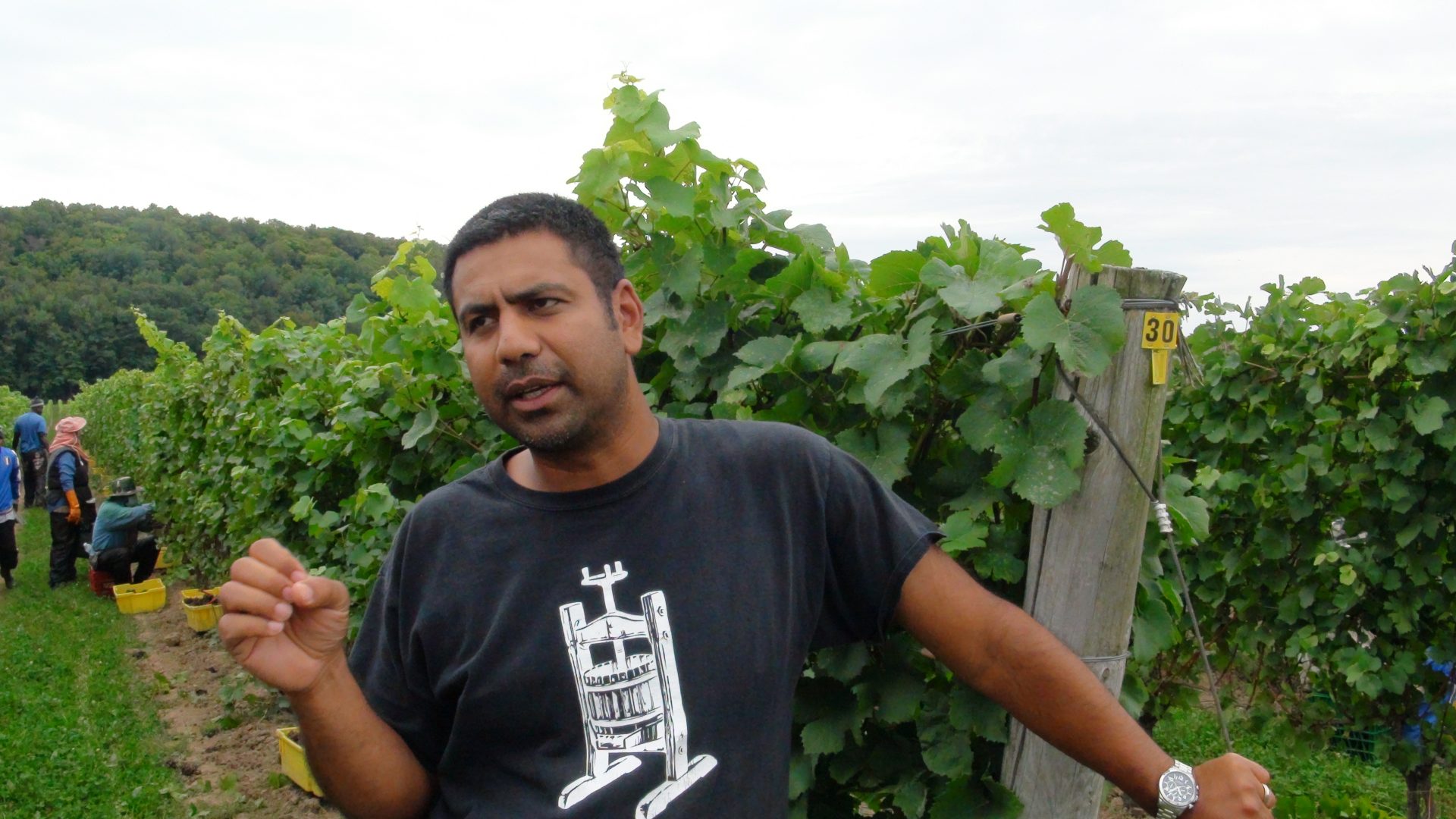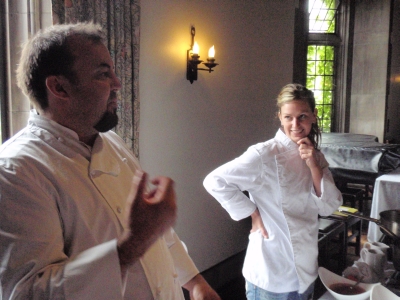by Malcolm Jolley
[A 2011 GFR update on Ontario ramps or wild leeks is available here – Ed.]
On a drizzly April day about five years ago, on my family’s property in Durham County, about an hour northeast of Toronto, a bunch of us were working in the woods, cutting down some dead trees. Near one large old sugar maple we noticed a skunky, garlicky smell under foot. Holy cow, I thought, these must be ramps (otherwise known as wild leeks). And sure enough, we picked a few that afternoon and sautéed them up that evening to try and test. Results were delicious and so was the simple pasta we made once we had picked more that evening.
Now, every spring, as soon as there is a spell of sunny weather (and as soon as tulips start to shoot out of my city garden, well south of the Highway 7 climate line) I head up to the maple patch to see if the ramps have shot up from under the matting of last autumn’s dead leaves to bring the first patches of green to the forest floor. The season is pretty short: if the lily-like shoots get too big they go off in flavour, and get overly fibrous. This year’s very early and warm spring has accelerated the season – the ramps are early in Southern Ontario by a few weeks. Even in the two days between Good Friday and Easter Sunday this year, the ramps went from being too small to dig up to a few (maybe a quarter of the stems in each patch) being ready.
I harvest ramps on my knees with a trowel. Their extensive and firm root system make them impossible to simply pull out of the ground – you have to more or less dig them out – and sometimes several stems will share a common root system. I am careful to selectively cull. Like trilliums, their forest cousins, ramps spread by by root systems. If a whole patch is dug out, then that’s it for them. They’re, now, protected in Quebec where the demand for wild foods in the high kitchens of Montreal, New England and New York City created such a high demand through he late 90’s and early 00’s that the population was virtually wiped out. Ramps cannot be domesticated or cultivated, short of transplantation.
Toronto chefs, or at least their menu writers, seem to prefer the moniker ‘wild leek’ to ramp. I’m not sure why. The plant looks a bit like a leek – or really more like a a scallion crossed with a lily, if you ask me. But the taste is more anagolous to a scape, or green wild garlic. On the alluvium scale I’d say more garlic than leek, but that doesn’t do them justice. What they taste like more than anything is the forest floor. There is an earthiness than penetrates through the strong oniony notes. I imagine the smell of rotting leaves and black topsoil warmed by the sun before the maple leaves block it out.
Kitchen treatment, at least in the early days of the season ought to be sparse. The first few I pulled got chopped up, from bulb to the tips of the leaves and scrambled with eggs. Then, for an Easter Monday dinner with a few family members, I made a version of the great ramp promoter Mario Batali’s Spaghetti with Ramps, substituting dry chili flakes for a fresh one and the bread crumbs for torn u bits of prosciutto added to the sauce with the pasta. The salt and oil heightened the sylvan ramp flavour and winter suddenly seemed far away.
That’s why the Ontario fooderatti is so excited: ramps actually taste like the smell of spring.
 Malcolm Jolley is the editor of Good Food Revolution.
Malcolm Jolley is the editor of Good Food Revolution.








Great piece Malcolm, couldn’t agree more. Chalk up another archetypal example of soil’s effect on flavour in vegetables! (p.s. “alluvium” is soil, allium is an onion, but in this case, both apply!)
Never made that connection! Thanks. M.